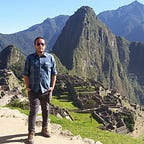Visitor’s Impact on World Heritage: Insights From Yosemite National Park
World Heritage Sites (WHS) have massive appeal for tourism all around the world. This is due to their outstanding natural and cultural features, which are unique on Earth.
How should tourism be managed at WHS while at the same time encouraging people to come and explore?
WHS managers oversee the interaction between visitors and their sites. Visitation rates have a direct impact on heritage sites, and it varies depending if it is a natural or cultural site. Cultural site management focuses on protecting and conserving tangible culture (e.g. structures, objects, art) and intangible culture (e.g. rituals, practices, oral tradition); while natural site managements concentrates on the preservation ecosystems and natural resources.
At National Parks there are legal and administrative frameworks to watch over these protected areas. Nonetheless, some National Parks are widely open to the public for unchecked exploration. This sort of layout makes it harder for site managers to monitor park activity, and these leads to several issues caused by people.
A study published in 2015 evaluated how management and context in protected areas has changed and evolved during the last four decades. The results of the survey showed how visitors and tourism on World Natural Heritage sites have progressively increased since 2003. This process brings along issues such as increased traffic of visitors, and infrastructure that endangers natural resources (Conradin, Engesser and Wiesmann, 2015).
Yosemite National Park is located in the Sierra Nevada Mountains in California (Figure 1). It was inscribed as a WHS in 1984 for its outstanding natural beauty and its unique and pronounced land formations (UNESCO, 2017).
One of the main issues that Yosemite National Park faces is the creation of informal trails by visitors all over the park. Certainly, this has been a significant challenge for Yosemite National Park’s management; since this informal trail network penetrates into protected areas, habitats and landscapes of the park. This activity brings negative repercussions and represents a serious threat for ecological integrity, aesthetics, ecosystems, landscapes and visitor’s experience in general (Leung et al., 2011).
Informal trails made randomly by visitors have a detrimental impact on the natural assets and ecosystems that the park protects. People’s idea to explore the wilderness and desire to find pristine places, are normally the incentive to get off of the beaten path. Despite the fact that Yosemite National Park already has predetermined trails and paths (Figure 2), visitors are motivated to create their own trails; regardless of any negative repercussions or possible damages that they cause to the ecological balance of the park. This implies that the park administration must seek to measure and mitigate this problem.
Although this is just an example of a negative and detrimental impact of visitor’s into a national park, it is necessary to be aware that these types of situations affect almost every World Heritage Site. Therefore, entities and authorities managing these sites should be prepared and develop effective strategies, integral management plans, monitoring protocols, and appropriate interventions and procedures to minimize the impact that visitors can have on cultural heritage or natural protected areas. Finally, visitors should also be encouraged to be more careful, aware and respectful while visiting any World Heritage Site, in order to protect and preserve their natural and cultural wealth.
References
Leung, Y., Newburger, T., Jones, M., Kuhn, B., & Woiderski, B., 2011. Developing a Monitoring Protocol for Visitor-Created Informal Trails in Yosemite National Park, USA. Environmental Management, 47(1), 93–106.
Conradin, K., Engesser, M., & Wiesmann, U., 2015. Four decades of World Natural Heritage–how changing protected area values influence the UNESCO label. DIE ERDE–Journal of the Geographical Society of Berlin, 146(1), 34–46.
Yosemite National Park. UNESCO Centre. Retrieved: February 24, 2017, from http://whc.unesco.org/en/list/308
